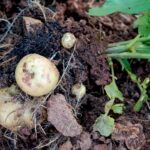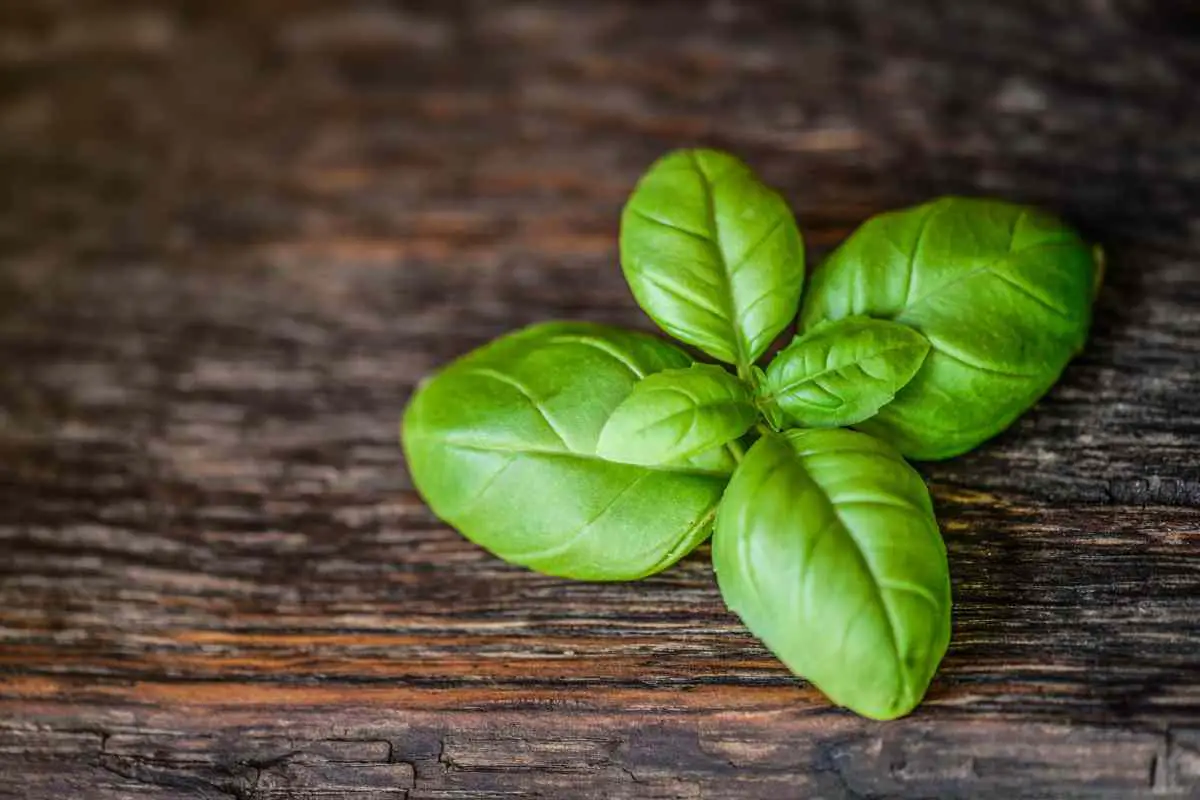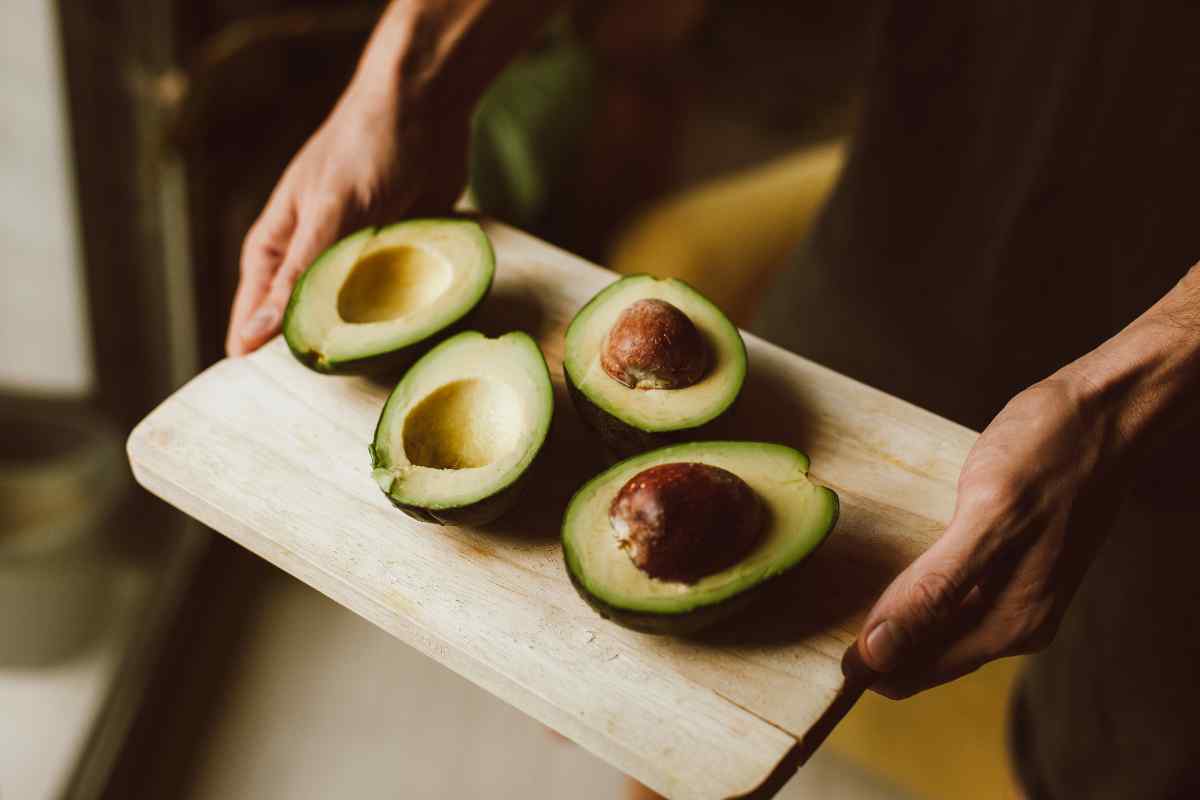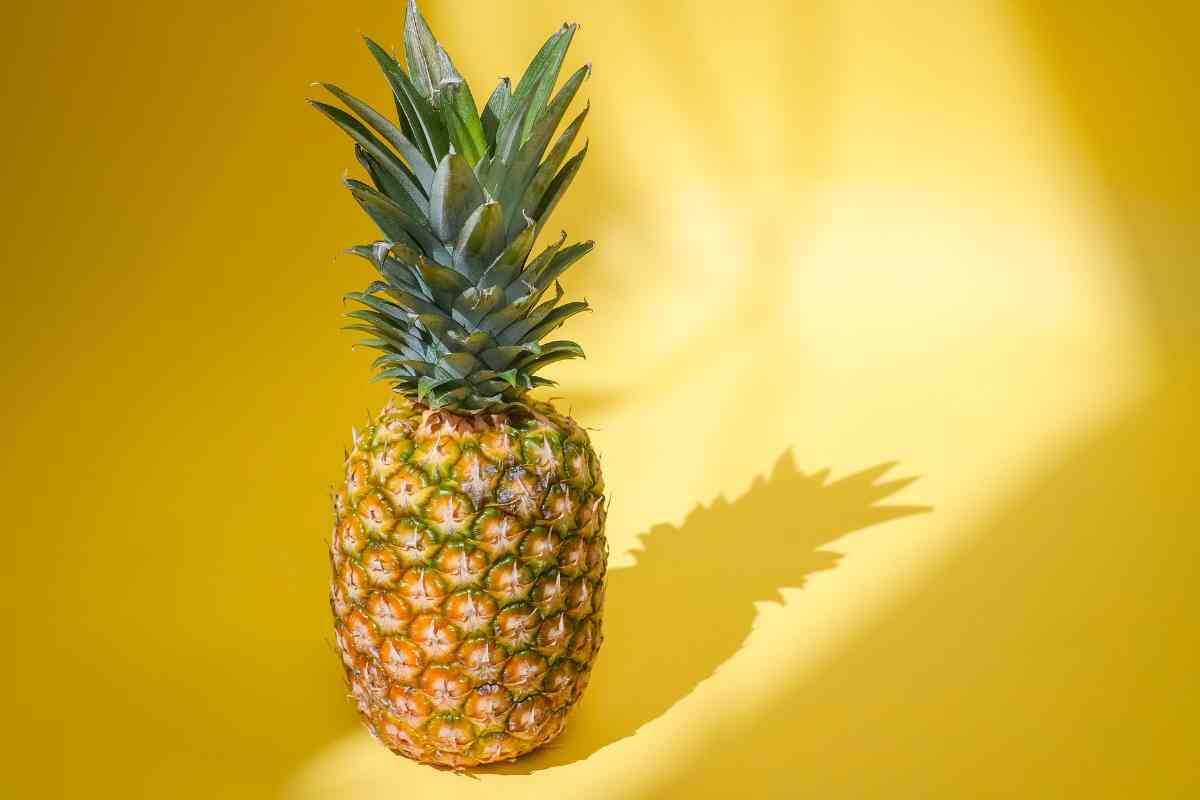Storing your potatoes and onions the right way will keep them fresh longer. Make sure to use a well-ventilated container. You can drill or cut holes into anything you have at home. For potatoes, place the container in a dark place or cover it. Onions are best in a wire basket.
Overall, you never want to store these vegetables in the fridge! The cold causes them to spoil much faster.
If you enjoy growing your own produce, knowing the best methods to keep them will give them a good shelf-life.
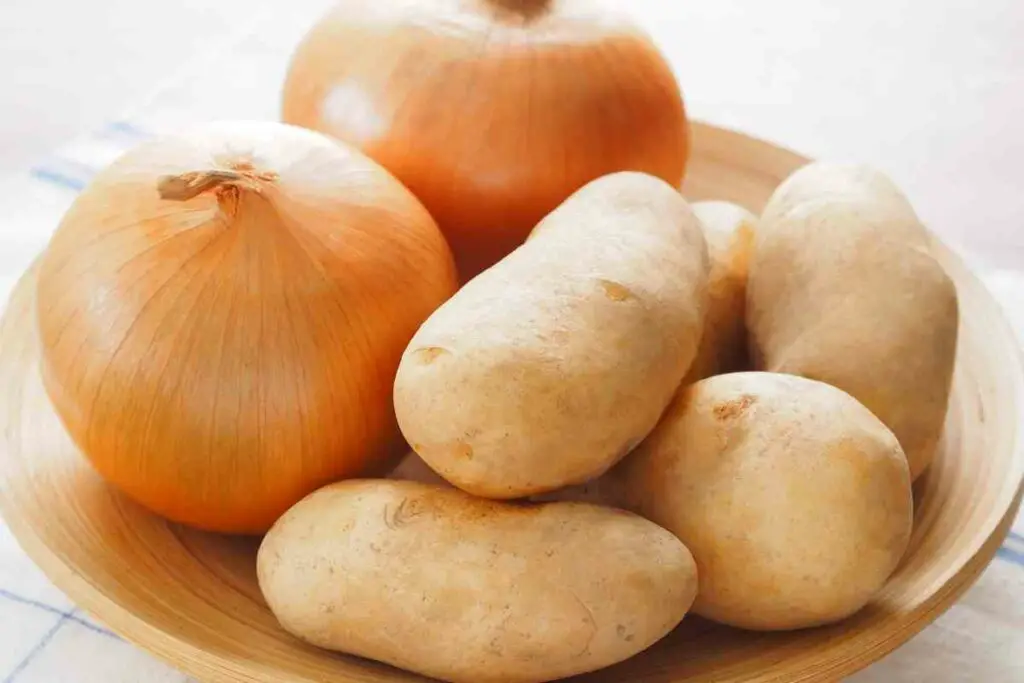
What’s the Right Way To Store Potatoes and Onions?
First, make sure you never place these items in your fridge! They won’t last long there. You also need to store them separately, so they aren’t near each other.
Onions emit ethylene gas, which causes potatoes to ripen, then spoil quicker than they should. If you’re storing them together, it may seem like your produce goes bad quickly.
Next, you’ll need containers for your potatoes and onions. Both require plenty of ventilation, so moisture doesn’t stay trapped inside and cause them to rot.
However, you want to treat these two vegetables differently to increase their shelf-life.
Growing Potatos In Containers
Growing potatoes in containers are easy to do, no matter where you live. You need to know when to plant them and what to plant them in. From there, you just water the potatoes often.
Growing potatoes at home is a great skill to have. Plus, using containers allows those living in cities to learn some farming skills.
What’s the Right Way To Store Potatoes?
You want to keep your potatoes in a well-ventilated container. Many people use cardboard boxes or crates with holes. Make your own here.
You want to keep plenty of space between the potatoes too. Overcrowding them can lead to moisture build-ups.
Never put potatoes in zipped plastic bags, Tupperware, or sealed glass containers. These storage options trap humidity inside as the potatoes release moisture- causing them to go bad quickly.
Next, you want to place the potato container in a cool, dry, dark place. That means keeping them in a cupboard or the pantry in many homes.
Don’t keep them anywhere cold– doing so causes the potato to increase the number of sugars they contain.
Place a lightweight cloth or towel over the container. Doing so prevents light from reaching the potatoes and causing them to grow sprouts.
What’s the Right Way To Store Onions?
You’ll need a slightly different approach to storing your fresh onions. You also want to keep them in a well-ventilated area.
It’s a good idea to leave the onions on your kitchen counter or the top of your fridge for more storage space.
Like potatoes, you don’t want to put the onions in Tupperware or other sealed containers. They won’t stay fresh for as long.
Keep your onions in a paper bag or wire basket. These containers offer plenty of ventilation, keeping them fresh.
Lastly, don’t place the onions in the fridge– they will soften quickly! You won’t need to cover them, as you do with potatoes, because onions won’t sprout in the sunlight.
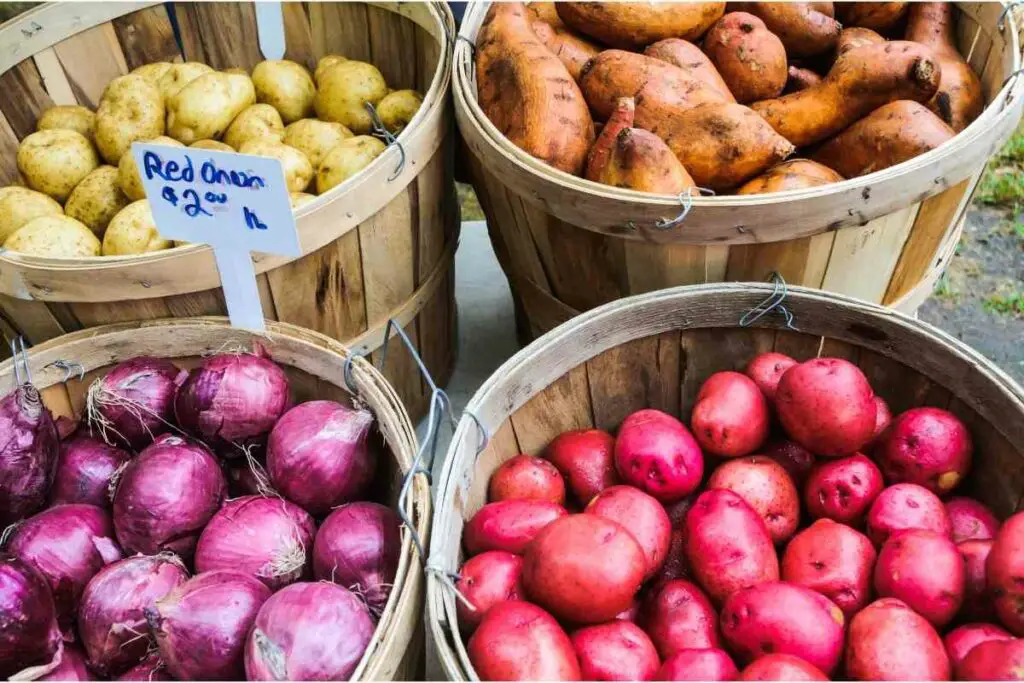
Can I Make a DIY Potato and Onion Bin?
Many people who use a lot of potatoes and onions in their cooking have storage bins at home for them. If you enjoy wood DIY projects, you can make your own!
You need your bin to have two separate parts, so the potatoes and onion aren’t too close together. It should also have some holes for ventilation and airflow.
The design is much like a dresser, with a few small holes in the back.
Additionally, you can use a wooden crate (or make one yourself with wooden boards) and hang it in the kitchen. If you attach a hook to the bottom of the box, you can then hang your onion wire basket from it.
Many people love these options because they want their potatoes and onions near each other to make prepping for cooking easier. Your homemade bin can be as elaborate or simple as you want.
Or if you don’t have time check out our recommended Potato and Onion bin.
What’s a Potato and Onion Bin?
A potato and onion bin is a classic way to store your root vegetables for an extended period. You’ll find them in plenty of older kitchens. However, they’ve been making a comeback in recent years.
These bins are easy to make. You can create it like a thin standup dresser or like a chest.
The containers should keep the onions and the potatoes separate, so you don’t have to worry about them going bad.
The best part of making your own bin is completely customizing it. You can adjust the size, material, shape, color, design, and more as needed! Your DIY bin will be unique to you.
Overall, the primary purpose of these bins is to provide you with reusable storage for your produce.
Many people think of them in the same way as they do bread boxes- they keep your food fresh for longer.
How To Build a DIY Potato and Onion Bin
You’ll want a bin shaped like a chest if you have a pantry. You can easily slide it under the lowest shelves in the pantry.
Start by gathering 1 x 12 lumber boards. The length you cut depends on how much space you have in the pantry, but you can make them as long as you want. Start by cutting two panels that are the same length.
Connect the two with screws at a slight angle. Wood glue can help give you a more robust bond where the two boards connect.
Next, you can cut out the sides and front of the bin from the lumber and use screws to connect them. At this stage, you’ll have a simple box.
You’ll also need to cut out partitions for the inside of the chest. You can include as many as you want inside the box, although you’ll need at least one to keep the onions and potatoes separate.
Use a larger drill bit to make several holes on the back of the bin for aeration. Don’t drill them too close together, or you’ll end up connecting them.
Finally, you can cut out the lid and attach it with hinges. You can decorate the box as you see fit! Some people like to make theirs match their kitchen, but you can leave it simple if you want.
- How to Build a Planter Box for Bamboo: A Step-by-Step Guide

- Can Robotic Lawnmowers Handle Steep Slopes?

- Do You Need a Specific Lawn for a Robotic Lawnmower? Expert Advice

- Are Robotic Lawnmowers Safe for Pets and Children? Safety Features of Robotic Lawnmowers

- Why Use Robotic Lawnmowers? Advantages of Using a Robotic Lawnmower

- Is the GARDENA SILENO City 300 Cordless or Corded? A Clear Answer











